
On this month's Morbidly Fascinating Page:
Photographs of some of the strangest tombstones and memorials in the world and their backstories
In the Morbidly Fascinating Archives
The Haunted Lemp Mansion
Radium Poisoning in the 1920s
The Suicide Forest
Hollywood Forever Cemetery
Titanic Photos Before and After it Sank
SOME OF THE STRANGEST TOMBSTONES IN THE WORLD
The Woolridge Memorial
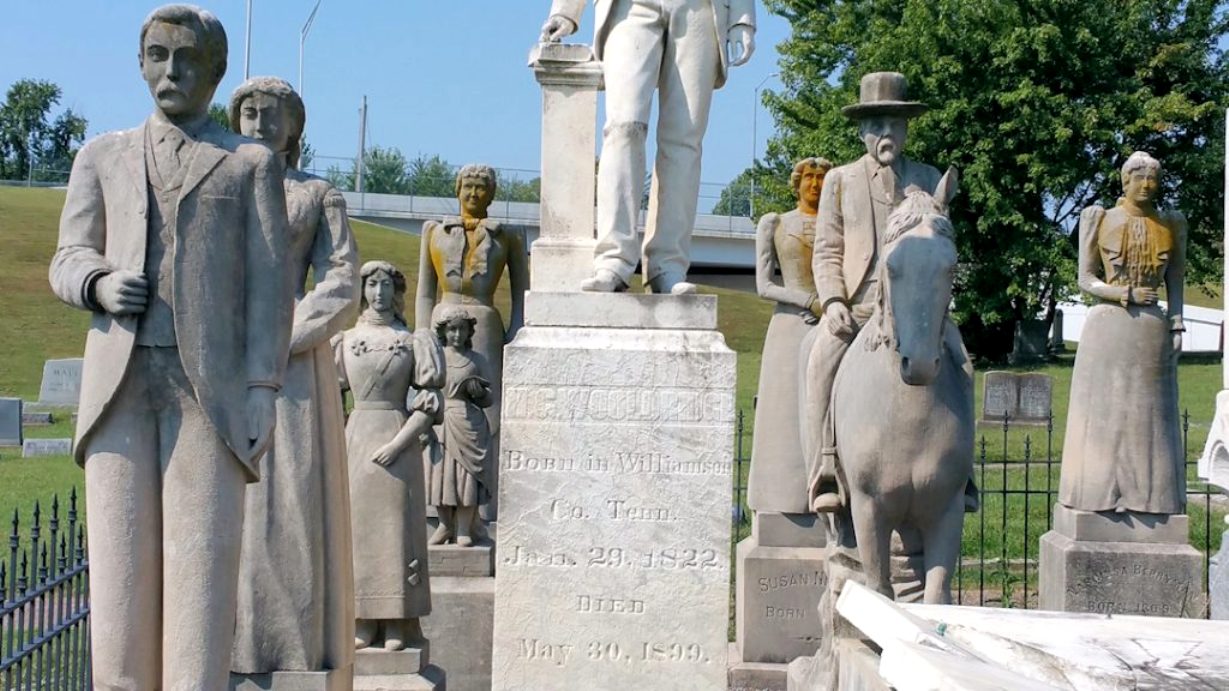
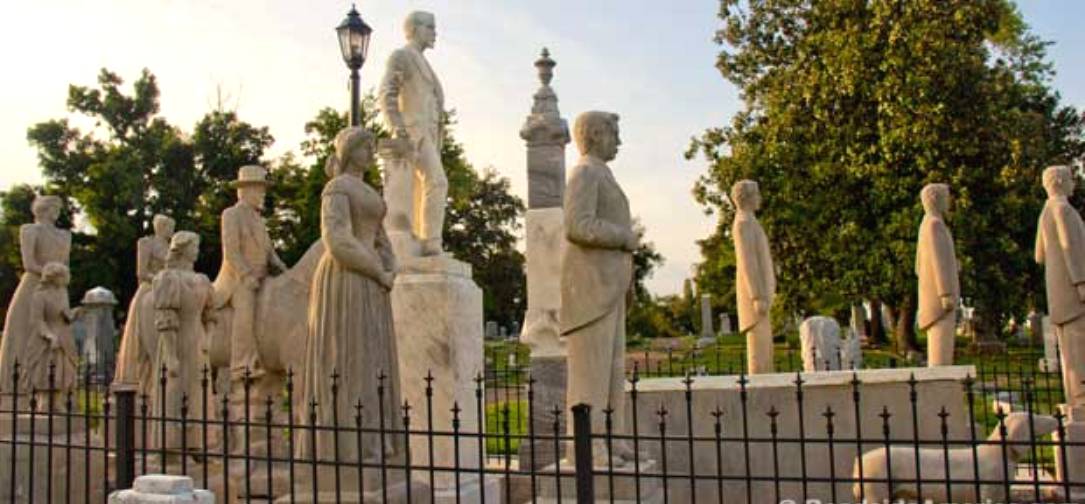
Location: Mayfield, Kentucky, USA
In May 1899 the Mayfield Monitor ran an obituary for Henry Wooldridge, "a very eccentric man." He was a local horse breeder and spent most of his 77 years living with relatives. Like the pharaohs of old, he wanted to take them with him when he died. Not literally, but in limestone.
Henry Wooldridge commissioned the Wooldridge Monuments, a collection of 18 life-sized statues of humans and animals, including a horse named Fop and two dogs named Tow Head and Bob. All 18 are crammed into Henry's 17 x 33-foot plot in Maplewood Cemetery, and all face due east. At some point early on they acquired the moniker: "The strange procession, which never moves."
See more HERE
Baby Monster
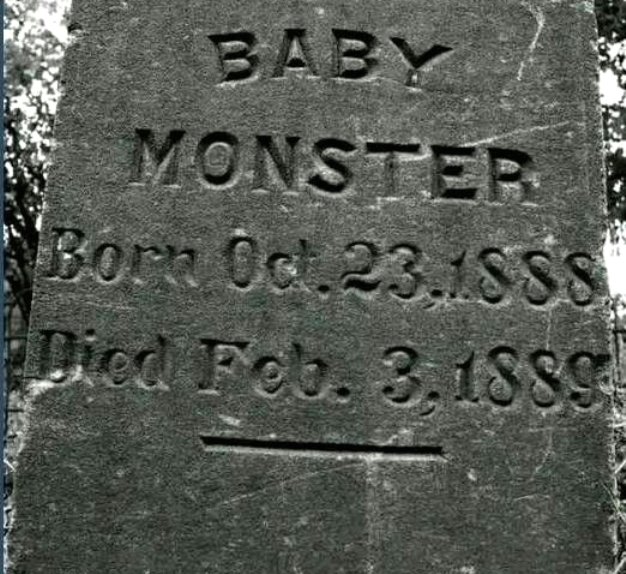
No, this is not a deformed child nor a two-headed calf. You may see this cropped version (above) pop up on the internet proclaiming to have been those things. In reality, Monster was a last name, as shown below:
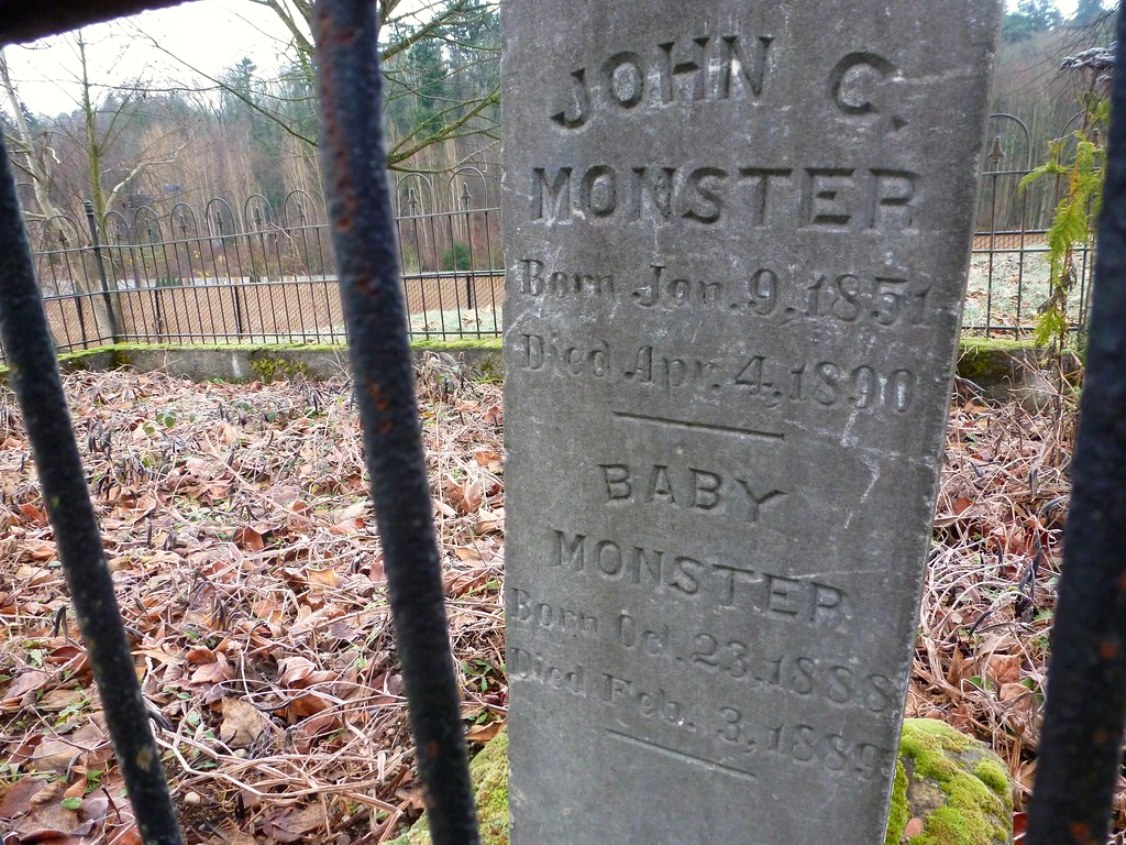
Location: King County, Washington State, USA
Frankenstein Jr. does not rest in the cemetery, nor does this stone mark the grave of a deformed or handicapped child. The word, "Monster," is simply a surname. This revelation can be backed up by the fact that Baby Monster was buried with a man named John C. Monster. The elder Monster was born in 1851 and died in 1890.
It's an extremely sad circumstance and one is left wondering why Baby Monster wasn't given a proper name on his/her tombstone, even after three months of life. It's possible that this tombstone was erected or carved well after the two people it memorializes had passed away...and the person simply didn't have a record of the name of the baby. Or, it could have possibly been because the child had never been baptized, and thus, never had a Christian name given to it. With such a high infant mortality rate at that time, it wasn't unheard of to wait several months before giving a child a proper name.
See more HERE
The Henrietta Susanna Bean Puzzle
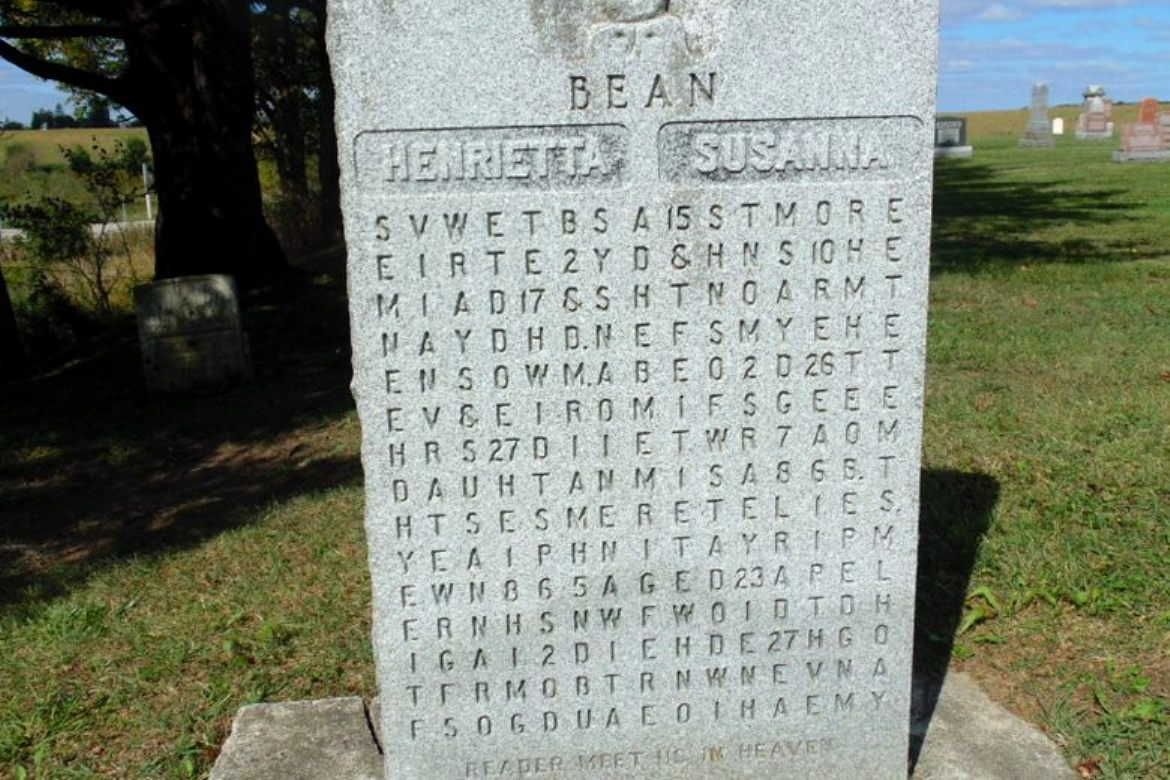
Location: Wellesley Township, Ontario, Canada
In rural Rushes Cemetery, one headstone stands out from the rest. Rather than the usual RIP, the Bean grave marker is etched with a crossword code. A message below the code urges, “Reader meet us in heaven.”
Dr. Samuel Bean’s first wife, Henrietta, died just seven months after the two were married. His second wife, Susanna, also met her untimely end after only a few months of marital bliss. Bean buried his two loves side by side, erected the mysterious tombstone above them and didn’t tell a soul what it meant. He took that secret to his watery grave when he was lost overboard from a boat heading to Cuba.
The epitaph drew curious visitors attempting to break the code to the little town of Wellesley over the following century. So many people came to make rubbings of the headstone that by the 1980s it was entirely illegible and had to be replaced with a replica. The cemetery groundskeeper claimed he had cracked it in the 1940s, but never revealed the answer. In the 1970s a 94-year-old woman solved the code and told what Dr. Bean had written for his two wives (read no farther if you would rather solve the code yourself.)
Beginning on the seventh character of the seventh row down and reading in a spiral fashion, the inscription reads: “In memoriam Henrietta, Ist wife of S. Bean, M.D. who died 27th Sep. 1865, aged 23 years, 2 months and 17 days and Susanna his 2nd wife who died 27th April, 1867, aged 26 years, 10 months and 15 days, 2 better wives 1 man never had, they were gifts from God but are now in Heaven. May God help me, S.B., to meet them there.”
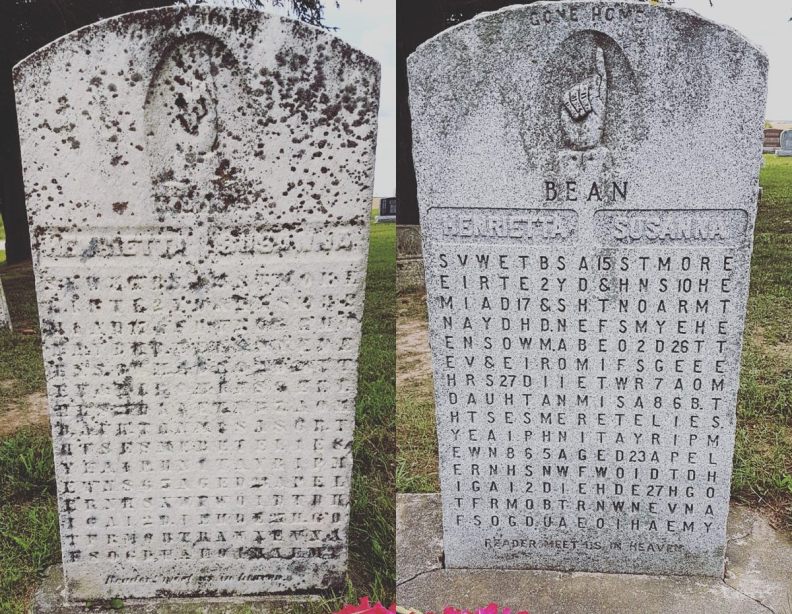
The original tombstone was worse from wear, so it was reconstructed in the 1980s.
See more HERE
The Fernand Arbelot tombstone
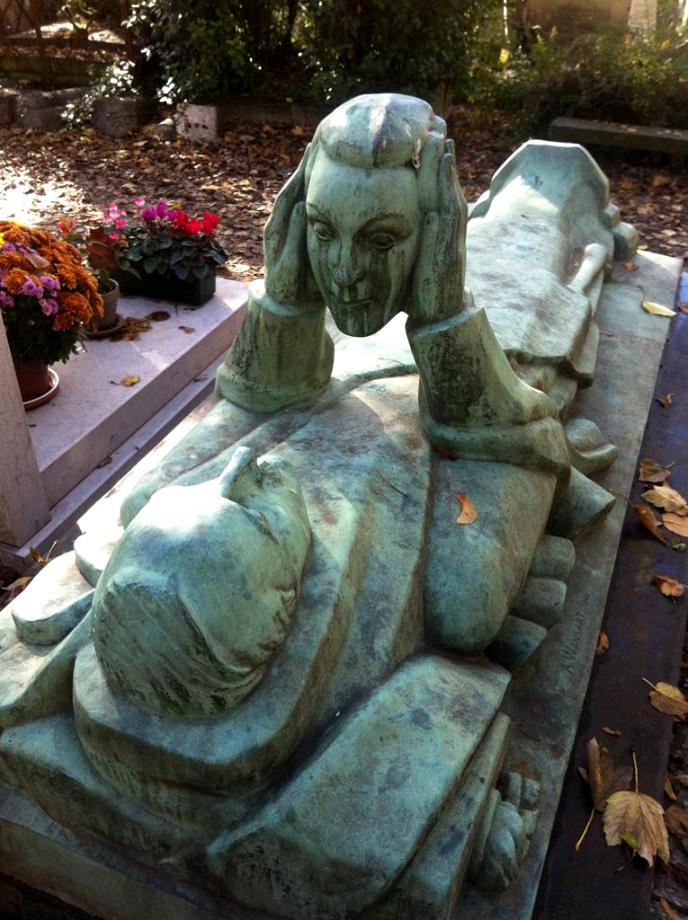
Location: The Boulevard de Ménilmontant, Paris, France
While at first glance the memorial might seem creepy, the design actually has a romantic meaning. Arbelot had one wish upon his death in 1942 – to gaze at his wife for all of eternity. The bronze sculpture, created by Adolphe Wansart, is inscribed with the words Ils furent emerveilles du beau voyage. Qui les mena jusqu'au bout de la vie. Which means "They were filled with wonder at the beautiful voyage. Which carried them until the end of life."
See more HERE (Warning: the website in this link requires cookies to view)
The Elijah Bond Tombstone (the creator of the Ouija Board)
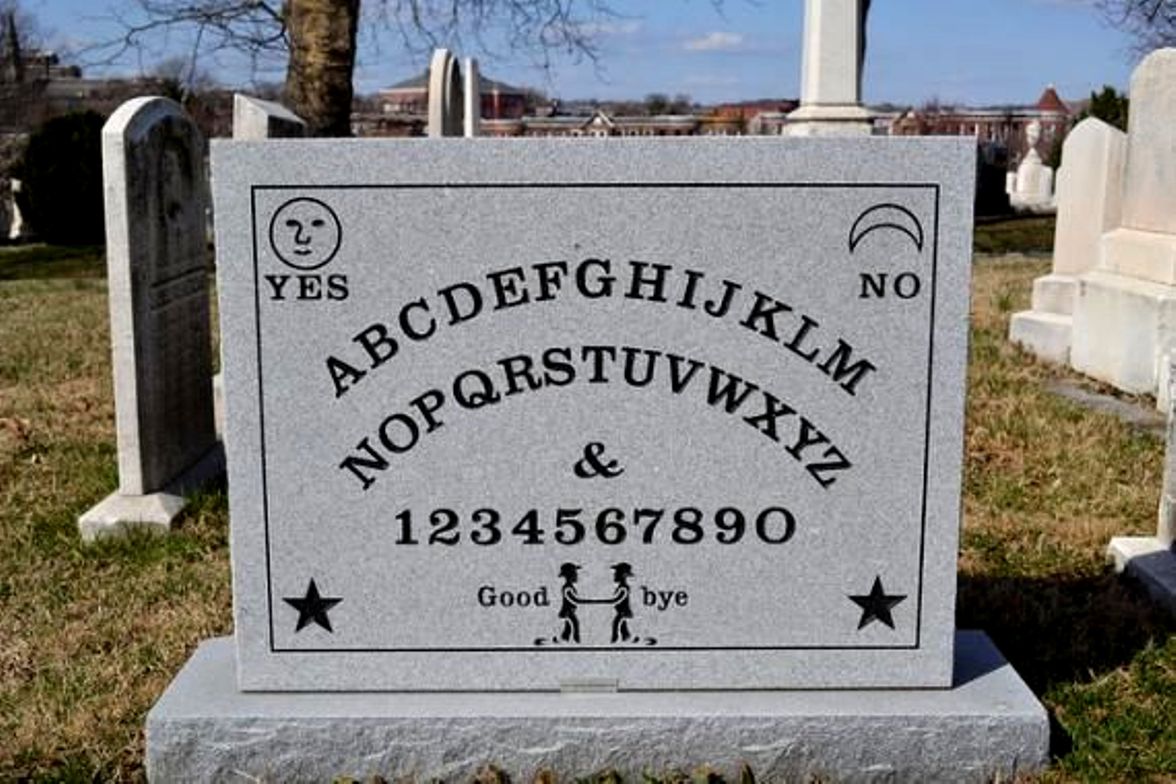
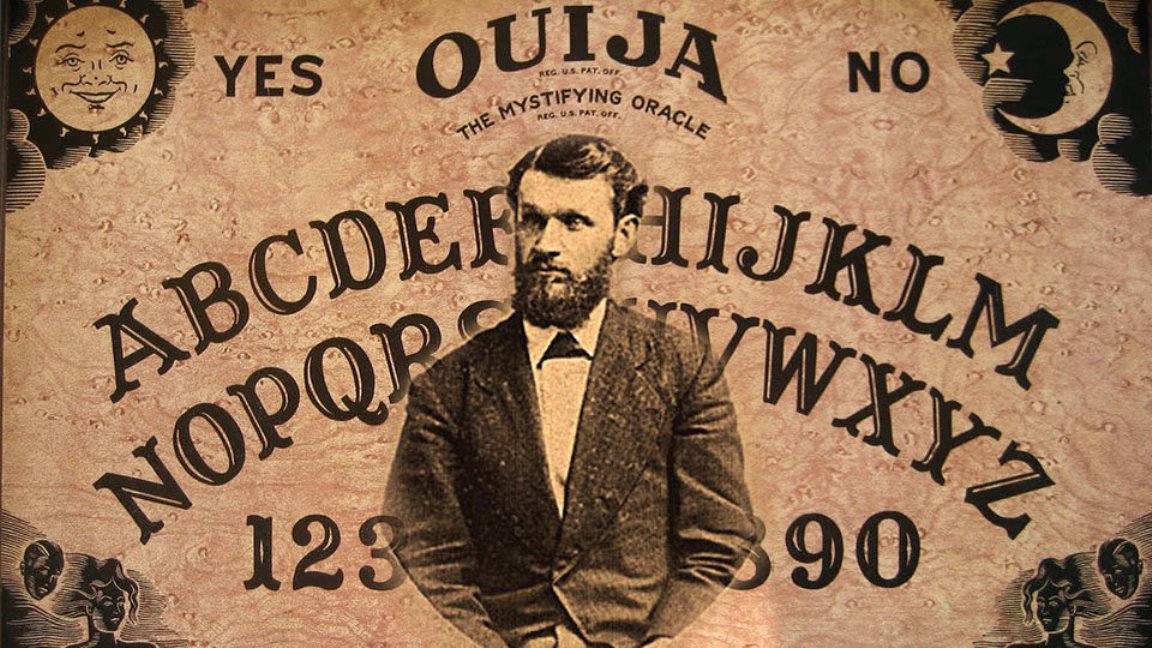
Location: Baltimore, Maryland, USA
Bond patented one of the world’s first commercially sold talking boards, which was trademarked as Ouija, and immediately captured people’s imaginations with his claims that it could help one speak to people from beyond the grave.
In one of the last century’s most intriguing (and perhaps intentional) ironies, the man responsible for bridging the communication gap between the living and the dead was buried in an unmarked grave, making him nearly impossible to find years later.
But in 2007, Robert Murch, a paranormal enthusiast and Ouija board collector, located the grave and Elijah Bond finally got the acclaim for his invention. Murch claims it took him 15 years to locate the precise grave in Baltimore’s Green Mount Cemetery, several of those spent working closely with the cemetery owners.
Volunteers and donation funds were pulled together to create Bond’s truly memorable headstone, which bears the traditional name, birth and death dates on one side, and a replication of a Ouija board carved into the other. The grave is now a popular destination for nostalgia fans and people interested in the supernatural. After years of resting in obscurity, Elijah Bond himself is finally being communicated with, one way or another.
See more HERE
Goat Horn Tombstones
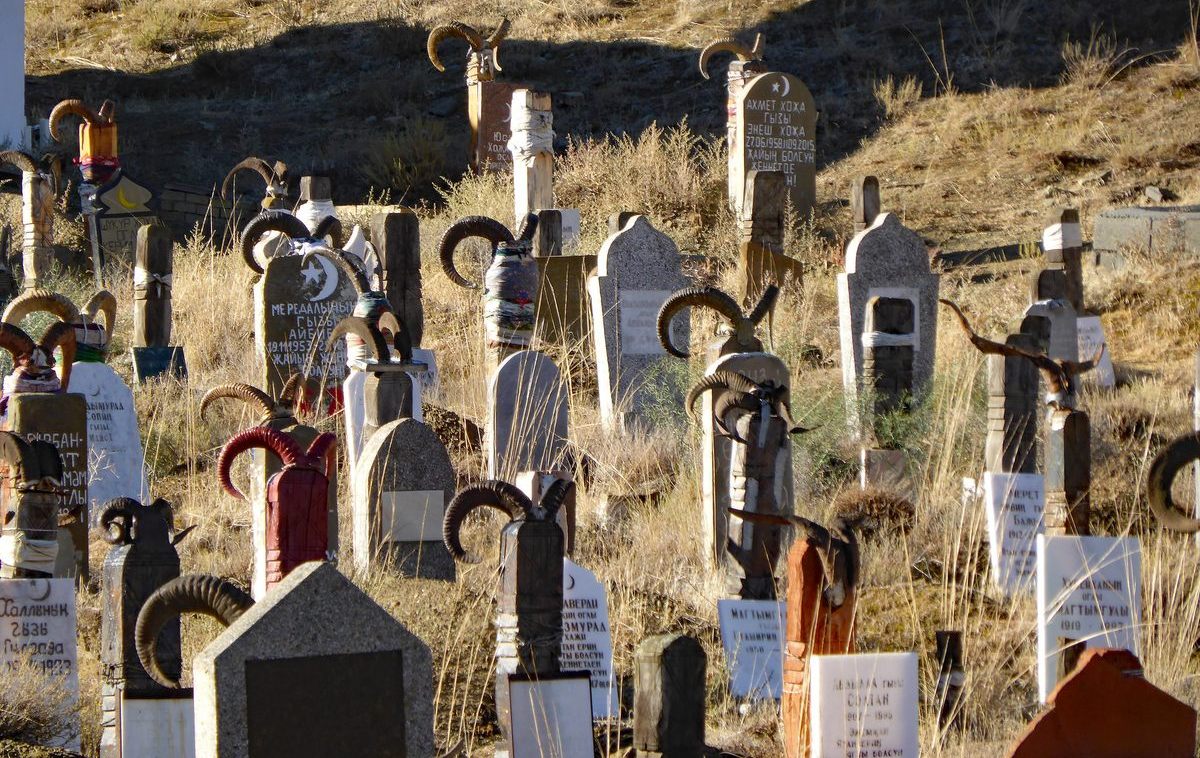
Location: Nokhur, Turkmenistan
At the cemetery of the isolated village of Nokhur, nearly every grave is marked by a wooden post adorned with the horns of a mountain goat.
The goat horns are thought to fight off evil spirits and help the souls of the deceased to ensure a safe passage to heaven. In addition to their appearances at the village cemetery, skulls of mountain goats are found at some of the houses’ doorways of the village as well.
The Nokhuris, the mountain tribe of the region, have always considered mountain goats sacred animals for their strength and endurance. The reverence of mountain goats clearly predates Islamic traditions, and though today the Nokhuris are devout Muslims, this part of their ancient belief system has continued to survive.
See more HERE
Bruce P. Berman

Location: Rahway, New Jersey, USA
One of the more unusual grave monuments at the Hazel Wood Cemetery in Rahway is that of Bruce Perry Berman, who was born in Elizabeth and lived in Westfield before moving to Nevada City, California, in 1993.
Berman was a special effects animator for national commercials and feature films. He worked at Sidley Wright Motion Works, Topix LA, and VIFX/ Video Image, a subsidiary of Twentieth Century Fox. Therefore, it may not be a coincidence that this headstone resembles Han Solo in carbonite.
See more HERE
Georges Rodenbach
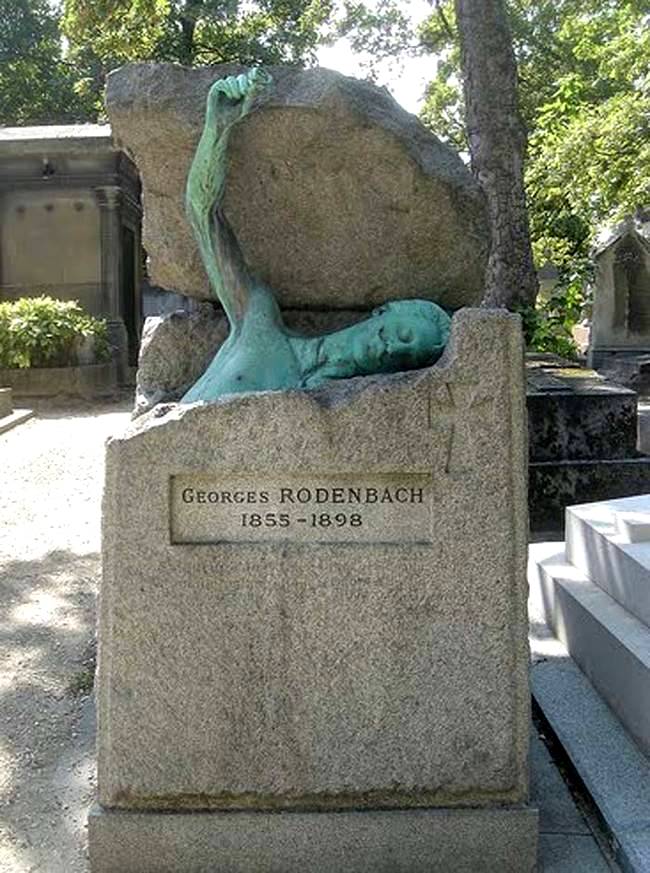
Location: Paris, France
Born in Tournai on 16 July 1855, illustrating Flemish themes in French language, Georges Rodenbach was the first Belgian writer to be successful in Paris. He was mostly known for his poetry. He also penned one of the masterpieces in fin de siècle literature, "Bruges-la-morte." This tells the story of Hugues Viane who was overcome with grief on the death of his wife.
Rodenbach died of appendicitis aged 43 on Christmas Day in 1898. He is buried in the Père Lachaise cemetery in Paris. His funerary monument shows the poet with a rose in his hand and a Templar cross engraved on the lower part of the tomb, but that's not all.
The tomb shows Rodenbach himself busting out of a large block of rough-cut granite. His tomb is meant to be a symbol of how even the grave cannot hold his spirit. He defiantly holds up a flower in one hand as if he is mocking death.
See more HERE
Lilly E. Gray
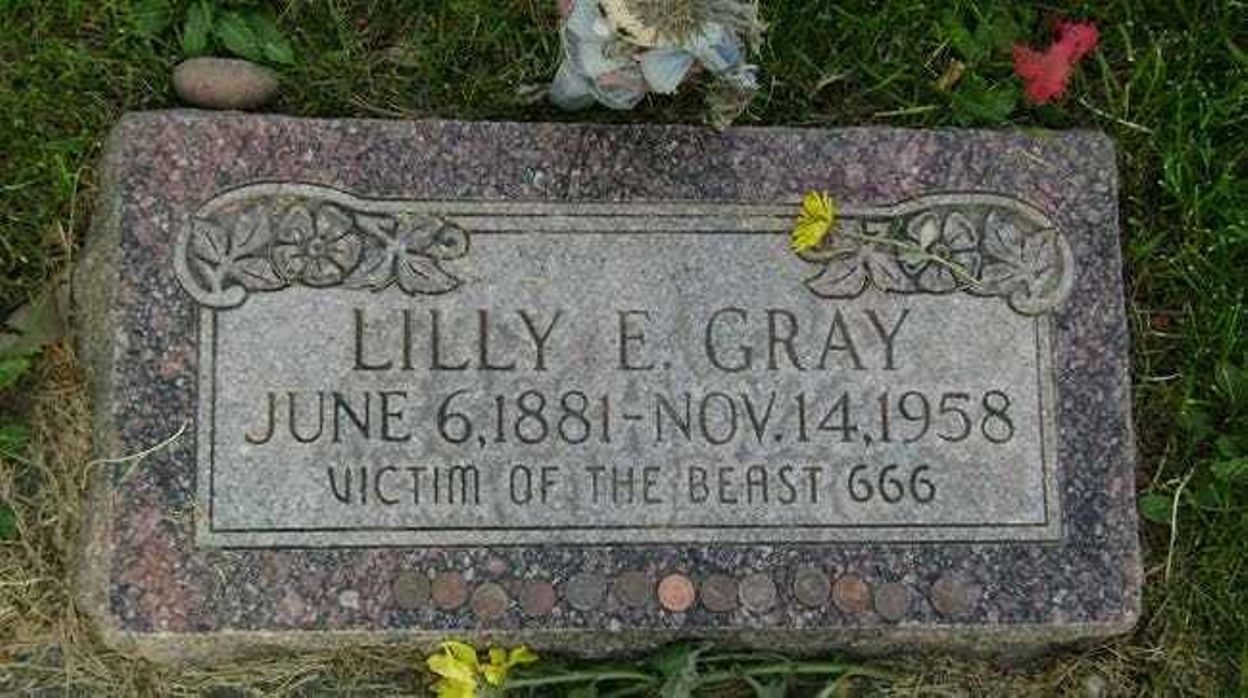
Location: Salt Lake City, Utah, USA
When Lilly E. Gray died from natural causes on November 14, 1958, her grave was marked by a simple stone inscribed with the ominous words: Victim of the Beast 666. But why?
Several theories have sought to answer this question, though none have completely managed to put the mystery to bed. One of the more plausible hypotheses comes from Richelle Hawks, whose examination of Lilly’s husband, Elmer L. Gray, reveals an eccentric character with a colorful past.
Hawks found that, after Elmer had been arrested for stealing an umbrella, a Utah State Board of Pardons document notes him requesting that his parole be terminated. When asked by the Board of Pardons for the full name under which he was serving, Gray wrote "Woodrowe Lamb, a bum."
For the address of his parents, Elmer responded: "Booth dead. Died of grief when kidnapers murdered my wife." He then referred to police and prison officials as the kidnapers. Elmer was married before Lilly, so it is unclear as to which wife he was referring.
Hawks points out in her article: "…whatever the real circumstances concerning these family deaths, it can be concluded that Elmer Gray blamed the government."
She went on, "With all the conspiracy, anti-government, sentiments of victimization within him, it is difficult and perhaps foolish not to come to one conclusion – that Elmer L. Gray was responsible for placing the outrageous phrase, Victim of the Beast 666, on his second wife Lilly’s gravestone."
See more HERE
Yuri Nikulin Memorial Statue

Location: Moscow, Russia
The bronze statue of Yuri Nikulin sits in a pine forest and looks at his faithful friend lying in front of him. In life, for more than 40 years, Mr. Nikulin entralled audiences as a clown, dramatic actor, television personality and director of the renowned Moscow Circus on Tsvetnoy Boulevard. The dog was a giant schnauzer named Fedor, so beloved by Nikulin that it shares the memorial with his master. The bronze statue of Nikulin is comlete with a bronze blanket on the cement wall.
The Davis Memorial (another family portrait)
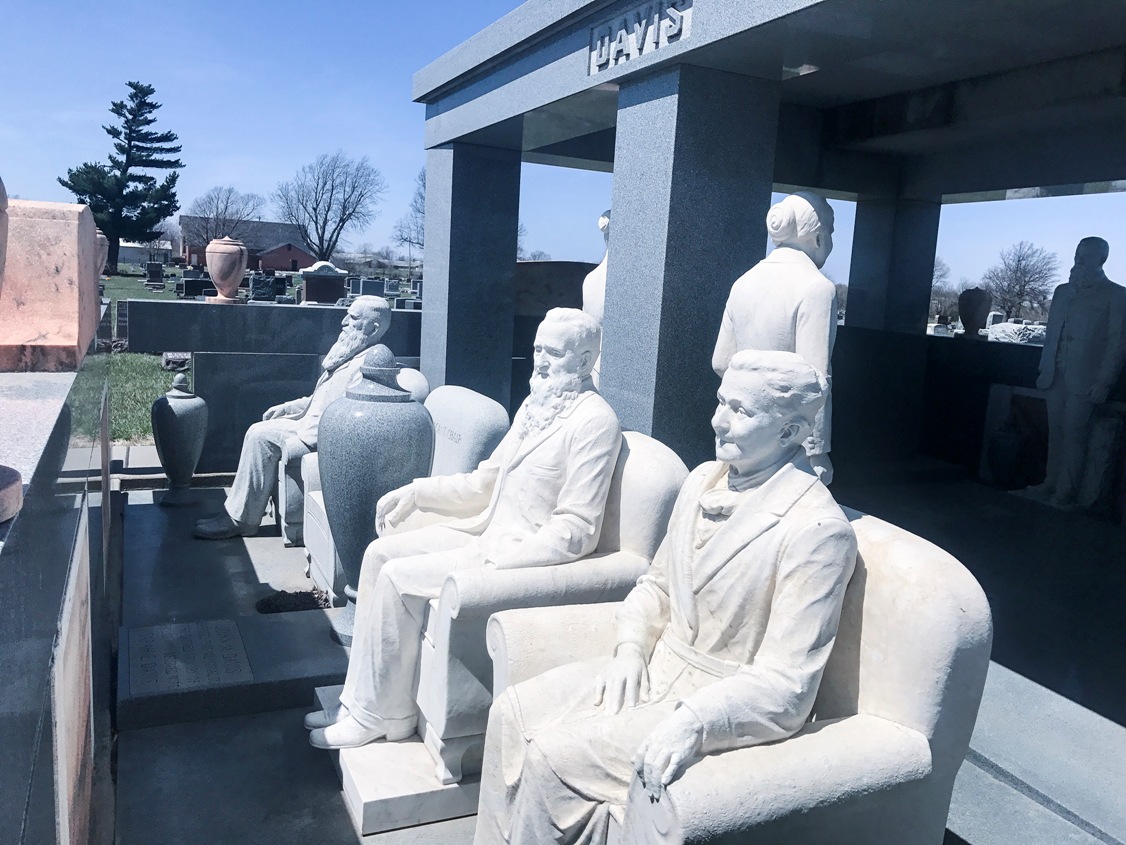
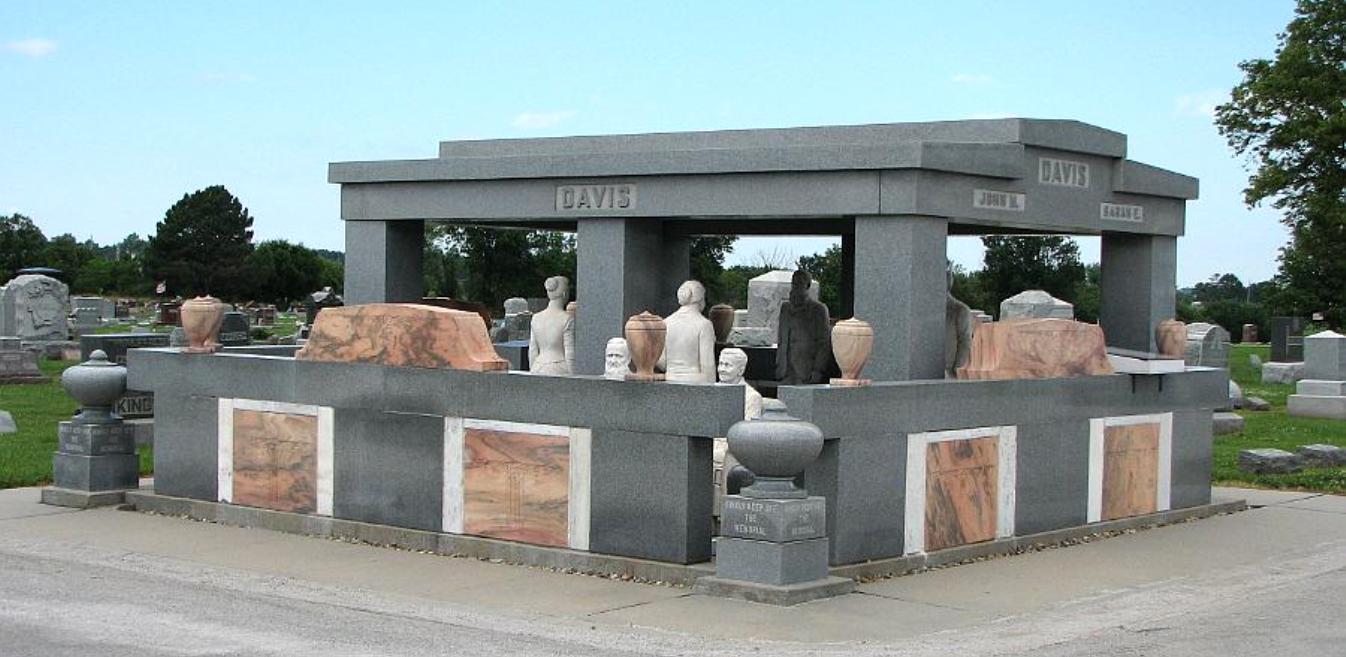
Location: Hiawatha, Kansas, USA
John Milburn Davis erected this memorial to "the sacred memory" of his wife, Sarah. After she died in 1930, he almost immediately commissioned the work to begin. The life-sized Italian marble statues of the Davis's were striking in their detail and accuracy. The cost of the memorial was staggering in a small town during The Great Depression. The stubbornness of Davis toward his project in the face of public criticism was prelude to a legend.
In a few years, 11 marble or granite statues were positioned beneath the canopy or surrounding it, some oddly facing backwards. These included an empty overstuffed chair, a winged angel-version of Sarah in prayer and figures of Davis without his left hand, which he lost to infection. The entire memorial, including the wall around it, took four years to build.
See more HERE
The Kiss of Death (El Petó de la Mort)

Location: Barcelona, Spain
The sculpture titled Kiss of Death was created in 1930 for the tomb of textile manufacturer Josep Llaudet Soler, which is inscribed with a verse by celebrated Catalan poet Jacinto Verdaguer. The epitaph reads: “His young heart is thus extinguished. The blood in his veins grows cold. And all strength has gone. Faith has been extolled by his fall into the arms of death. Amen.”
Though his exact birthdate is unknown, it is believed that Soler died at a young age, which prompted his family to commission the statue. It surely would have brought comfort to the family to imagine that Soler embraced, rather than feared, his death and that he passed in a peaceful manner. The emotion it stirs is one of the many reasons that the sculpture has continued to attract visitors for nearly 100 years.
But even beyond the concept, The Kiss of Death is heralded for the masterful way in which it's sculpted. It is believed to have been created by Jaume Barba, whose name is carved into the base, though some attribute the design to Joan Fontbernat. The statue is a masterful display of texture. The hard bones of the skeleton stand in juxtaposition to the young man's toned body. The skeleton's bony fingers sink into the man's soft flesh in a manner that reminds viewers of the human body's circle of life.
See more HERE